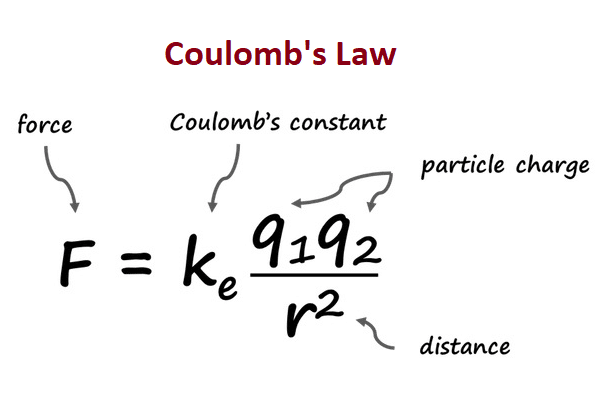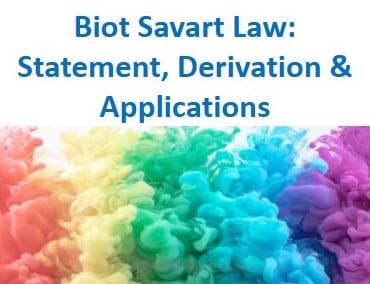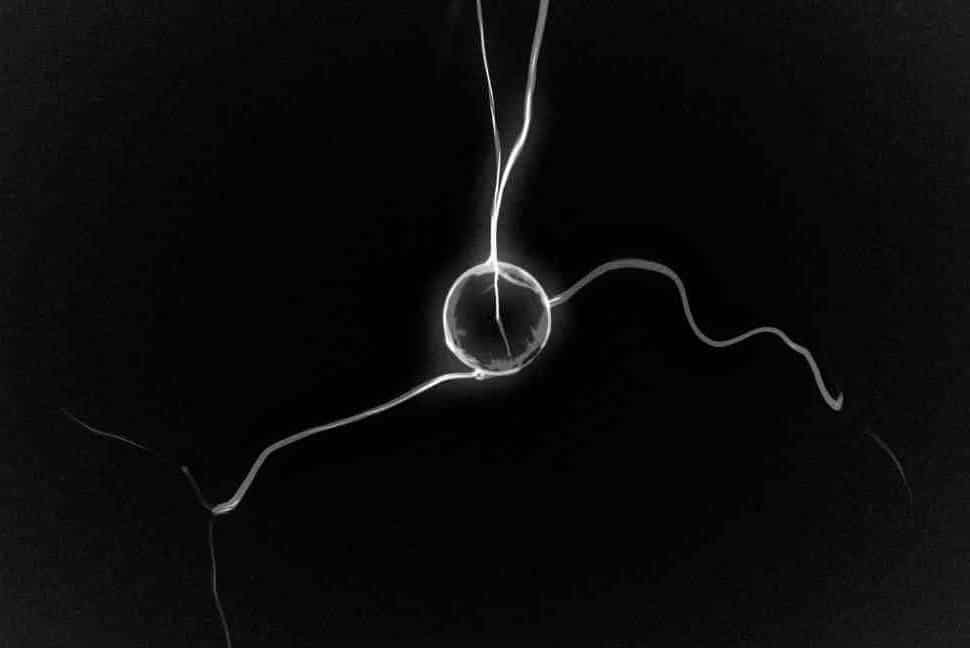Coulomb’s Law is all about how charged things (like balloons or socks rubbed on carpet) attract or repel each other. It says that the amount of attraction or repulsion depends on two things: how much charge each object has, and how far apart they are.
Imagine two magnets – if you hold them close together, they might snap together. But if you try to push two magnets together that have the same ends facing each other, they will push away from each other. This is because magnets have a magnetic field that makes them attract or repel each other, just like charged objects have an electric field that makes them attract or repel each other.

Coulomb’s Law is a way to calculate how strong that attraction or repulsion is between two charged objects. The more charge they have, the stronger the attraction or repulsion will be. And the farther apart they are, the weaker the attraction or repulsion will be.
Table of Contents
Joke of the Day
Why did the electron break up with the proton? Because the proton was always so positive, and the electron just couldn’t keep up with all the attraction!
Coulomb’s Law Equation
Coulomb’s Law equation is:
F = k * (q1 * q2) / r^2
where:
- F is the force between two charged objects in Newtons;
- q1 and q2 are the magnitudes of the two charges in Coulombs;
- r is the distance between the two charges in meters;
- k is Coulomb’s constant which has a value of 9 x 10^9 Nm^2/C^2.
This equation shows that the force between two charged objects is directly proportional to the product of their charges (q1 and q2), and inversely proportional to the square of the distance (r) between them.
Coulomb’s Law in Everyday Life
- Rubbing a balloon on your hair or a carpet charges the balloon, which then sticks to walls or hair due to Coulomb’s Law.
- Lightning is a natural occurrence of static electricity, where a buildup of charge in the atmosphere causes a discharge of energy in the form of a lightning bolt.
- The shock you feel when touching a doorknob after walking on carpet is due to the buildup of static electricity on your body, which discharges when you touch the doorknob.
- The attraction and repulsion between the positively and negatively charged ions in a battery power electrical devices such as phones and laptops.
- The sparks created when metal objects are put in a microwave oven are due to the buildup of static electricity created by the high electric field generated by the microwave.
Comparing Coulomb’s Law to Newton’s Law of Gravity
| Coulomb’s Law | Newton’s Law of Gravity | |
| Interaction | Between charged particles | Between massive particles |
| Force equation | F = k * (q1 * q2) / r^2 | F = G * (m1 * m2) / r^2 |
| Proportionalities | Directly proportional to the product of charges | Directly proportional to the product of masses |
| Inversely proportionalities | Inversely proportional to the square of the distance between charges | Inversely proportional to the square of the distance between masses |
| Attraction or Repulsion | Can be either attractive or repulsive | Always attractive |
| Nature of force | Electromagnetic force | Gravitational force |
| Application | Explains behavior of electrically charged objects | Explains behavior of massive objects in the universe |
Coulomb’s Law in Subatomic Physics
Coulomb’s Law plays an important role in subatomic physics, which is the study of the behavior of particles that make up atoms. Here are some examples of how Coulomb’s Law is used in subatomic physics:
- Coulomb’s Law helps us understand the behavior of particles such as electrons and protons, which are the building blocks of atoms. The attraction and repulsion between these particles determines the structure of atoms and the way they interact with each other.
- It is used to describe the forces that hold the nucleus of an atom together. Protons and neutrons, which make up the nucleus, are held together by the strong nuclear force, which is stronger than the electromagnetic force of Coulomb’s Law. However, the electromagnetic force still plays a role in determining the behavior of particles in the nucleus.
- Coulomb’s Law is used to explain the behavior of particles in particle accelerators, which are used to study the properties of subatomic particles. In these experiments, charged particles are accelerated to high speeds and made to collide with each other. The forces between these particles are governed by Coulomb’s Law.
- It is also used in the study of nuclear reactions, which involve the splitting or combining of atomic nuclei. The forces between particles in the nucleus are described by Coulomb’s Law, and understanding these forces is essential to understanding nuclear reactions.
Solved Problem
Problem: Two charges of +3 μC and -5 μC are placed 10 cm apart. What is the force between them?
Solution:
- Convert the charges to Coulombs: +3 μC = 3 x 10^-6 C -5 μC = -5 x 10^-6 C (note the negative sign indicates a negative charge)
- Convert the distance to meters: 10 cm = 0.1 m
- Calculate the force using Coulomb’s Law: F = k * (q1 * q2) / r^2 where k is Coulomb’s constant (9 x 10^9 Nm^2/C^2), q1 and q2 are the charges, and r is the distance between them. F = 9 x 10^9 * (3 x 10^-6) * (-5 x 10^-6) / (0.1)^2 F = -135 N (note the negative sign indicates an attractive force)
- Answer: The force between the charges is 135 N, directed towards each other.
Summary
Coulomb’s Law: force between charged particles is proportional to their charges and inversely proportional to the distance between them. It’s important in electromagnetism and helps us understand charged particle behavior.
More Links
Conduction in Physics| Daily Life Examples
Quarks in Physics| Properties and Daily Life Significance
Gauss Law-Definition and Overview| Daily Life Examples
Dipole Moment – Definition, Formula and Real-Life Examples
Dielectric Constant Definition and Real-Life Significance
Electromagnetic Force- Definition and Examples
- BCl3 Lewis Structure in four simple steps - November 1, 2023
- PH3 Lewis Structure in four simple steps - October 8, 2023
- PF3 Lewis structure in four simple steps - September 24, 2023



